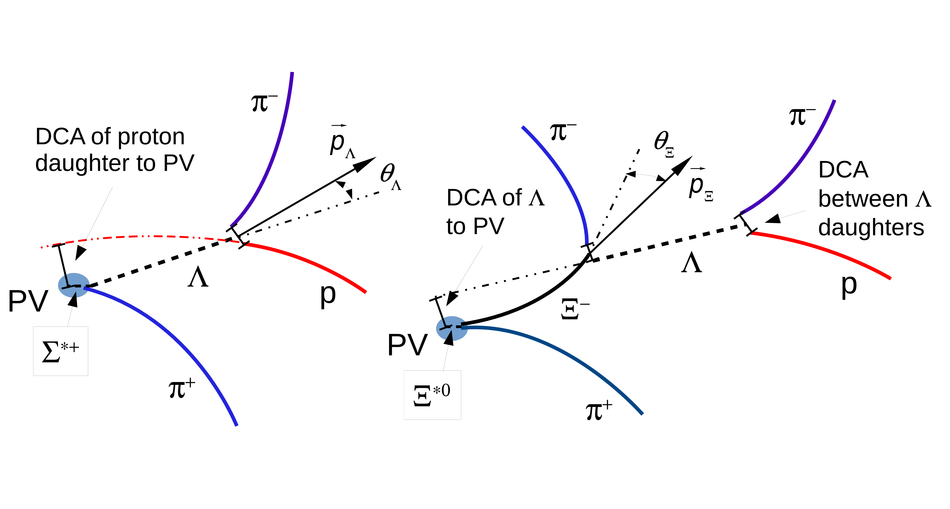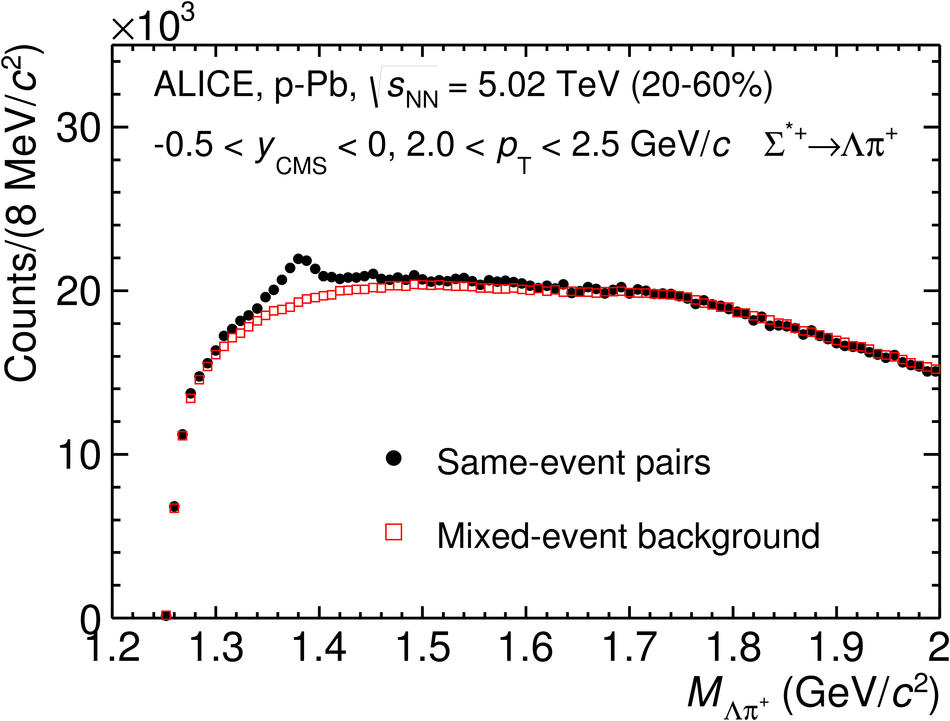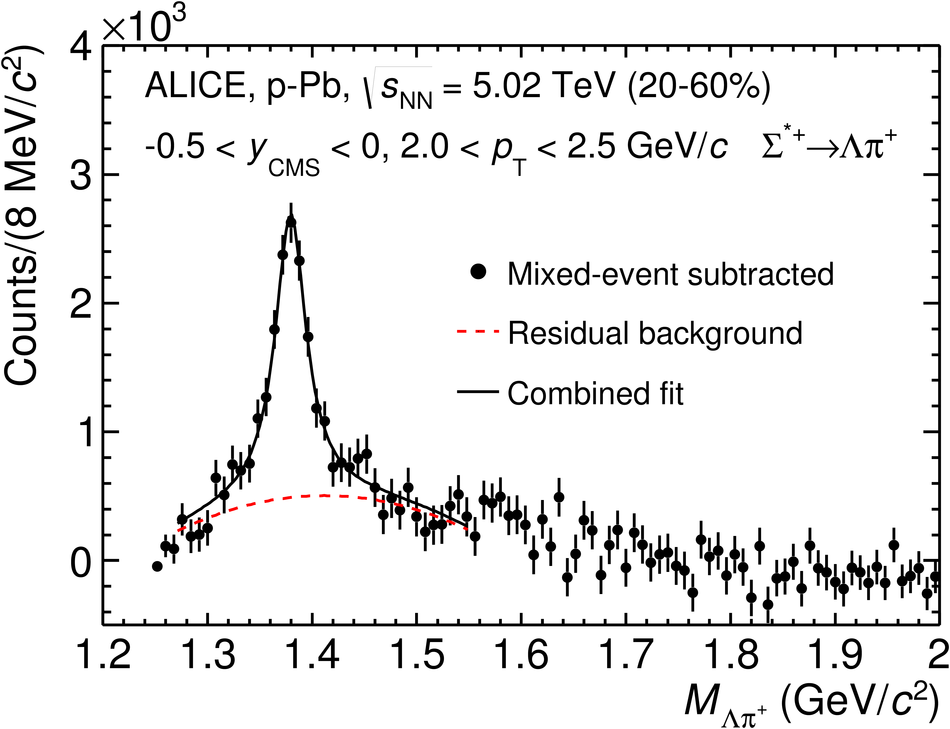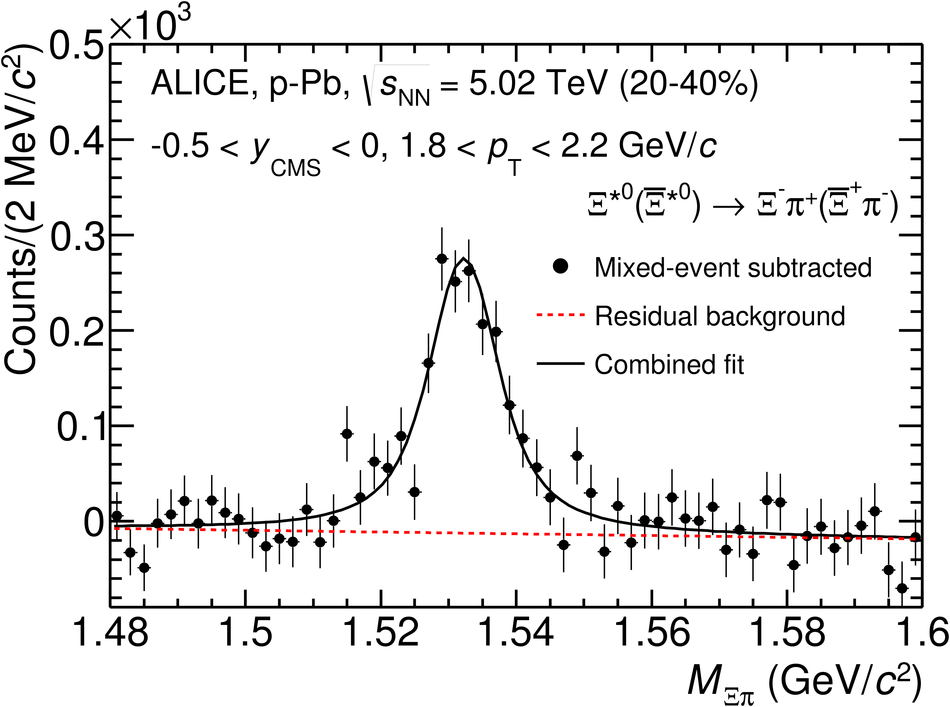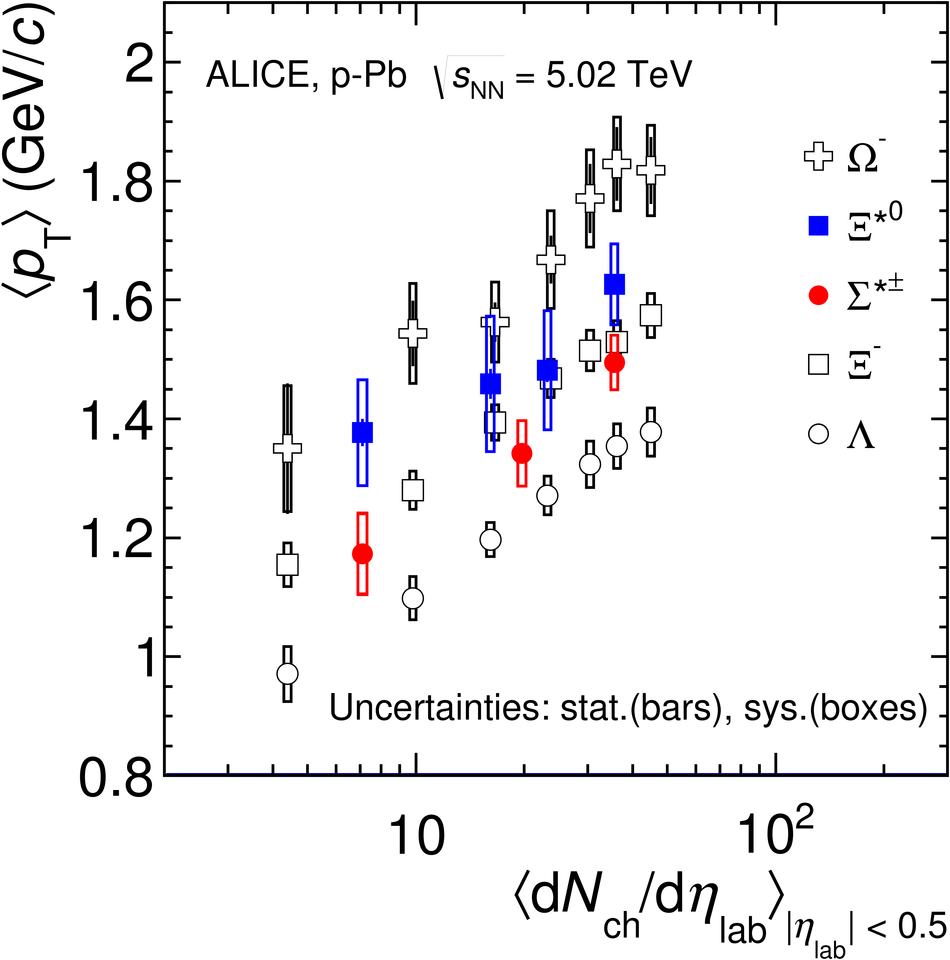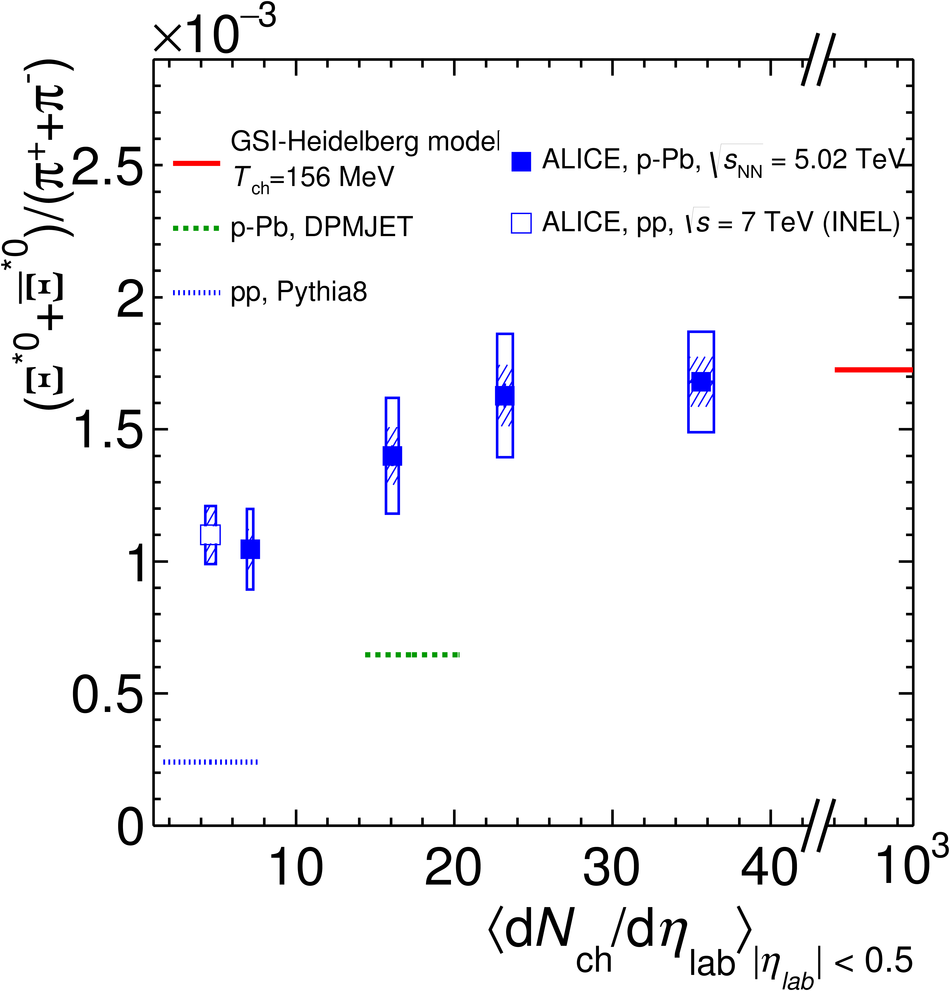The transverse momentum distributions of the strange and double-strange hyperon resonances ($\Sigma(1385)^{\pm}$, $\Xi(1530)^{0}$) produced in p-Pb collisions at $\sqrt{s_{\rm NN}}=5.02$ TeV were measured in the rapidity range $-0.5<~ y_{\rm{CMS}}<~0$ for event classes corresponding to different charged-particle multiplicity densities, $\langle{\rm d}N_{\rm{ch}}/{\rm d}\eta_{\rm{lab}}\rangle$. The mean transverse momentum values are presented as a function of $\langle{\rm d}N_{\rm{ch}}/{\rm d}\eta_{\rm{lab}}\rangle$, as well as a function of the particle masses and compared with previous results on hyperon production. The integrated yield ratios of excited to ground-state hyperons are constant as a function of $\langle{\rm d}N_{\rm{ch}}/{\rm d}\eta_{\rm{lab}}\rangle$. The equivalent ratios to pions exhibit an increase with $\langle{\rm d}N_{\rm{ch}}/{\rm d}\eta_{\rm{lab}}\rangle$, depending on their strangeness content.
Eur. Phys. J. C 77 (2017) 389
HEP Data
e-Print: arXiv:1701.07797 | PDF | inSPIRE
CERN-EP-2017-017

